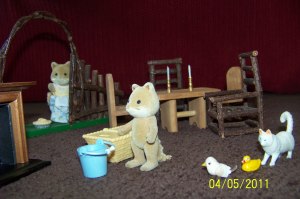Helping Children Remember Vowel Sounds
Remembering the wide variety of English vowels sounds can be a daunting task for emergent readers. Just getting down the subtle differences between the short sounds can be tricky. Then they have to learn a seemingly endless variation of vowel pairs.
To help emerging readers remember vowel sounds, I show them images that function as a visceral mnemonic device. Instead of remembering a specific word that has that vowel sound, I show an image of people/animals/objects that look as if they might be making that sound. In some instances, the image triggers the child to make the sound (the cute kitten makes children want to say the vowel pair “aw”). I then name the sound with a short phrase. I also include the letter or letters on the card.
Short a: Image of a crying baby with a wide open mouth and the word “waaaah” next to it; Crying Baby sound
Short e: Image of an older person with a hand cupped behind his ear appearing to say “eh”; “Speak Up!” sound
Short i: Image of a person sneering; Disgusted sound
Short o: Image of a child opening his mouth saying “ah” for the doctor; Doctor’s Visit sound
Short u: Image of a person looking confused and asking “What?”; Asking a Question sound
Whenever a child mispronounces or forgets a vowel sound, I move the appropriate flashcard above the word to prompt her memory of it.
Whenever I pull out the card, I say the short phrase that goes with it. Eventually, all I have to say is, “it’s the ‘Doctor’s Visit’ sound” to trigger a memory of the sound itself.
After a few times of looking at the images, some children remind themselves of the sound by first making the same expression as the face in the image or by acting out what they see in the image. One girl put her hand behind her ear to remind herself of the short e sound.
I’ve also created flashcards for vowel pairs that seem especially hard for beginning readers to remember. I then write all the most common spellings that make the sound on the flashcard. I give each of these cards a short name.
er, ir, ur: Cartoon image of a growling dog; Growling Dog sound
ow, ou: Cartoon image of a man who has just hammered his thumb and is obviously shouting “ow!”; Hammer Thumb sound
ew, oo: I found a funny image of two carved pumpkins in which one appears to be vomiting it’s innards and another appears to be looking at it and saying “ew”; Barfing Pumpkin sound.
aw, au: Cartoon image of an adorable kitten that makes you want to say “awwwww” when you look at it; Cute Kitten sound.
I try to find images that are silly or appealing as that helps lighten the load of learning vowels.







